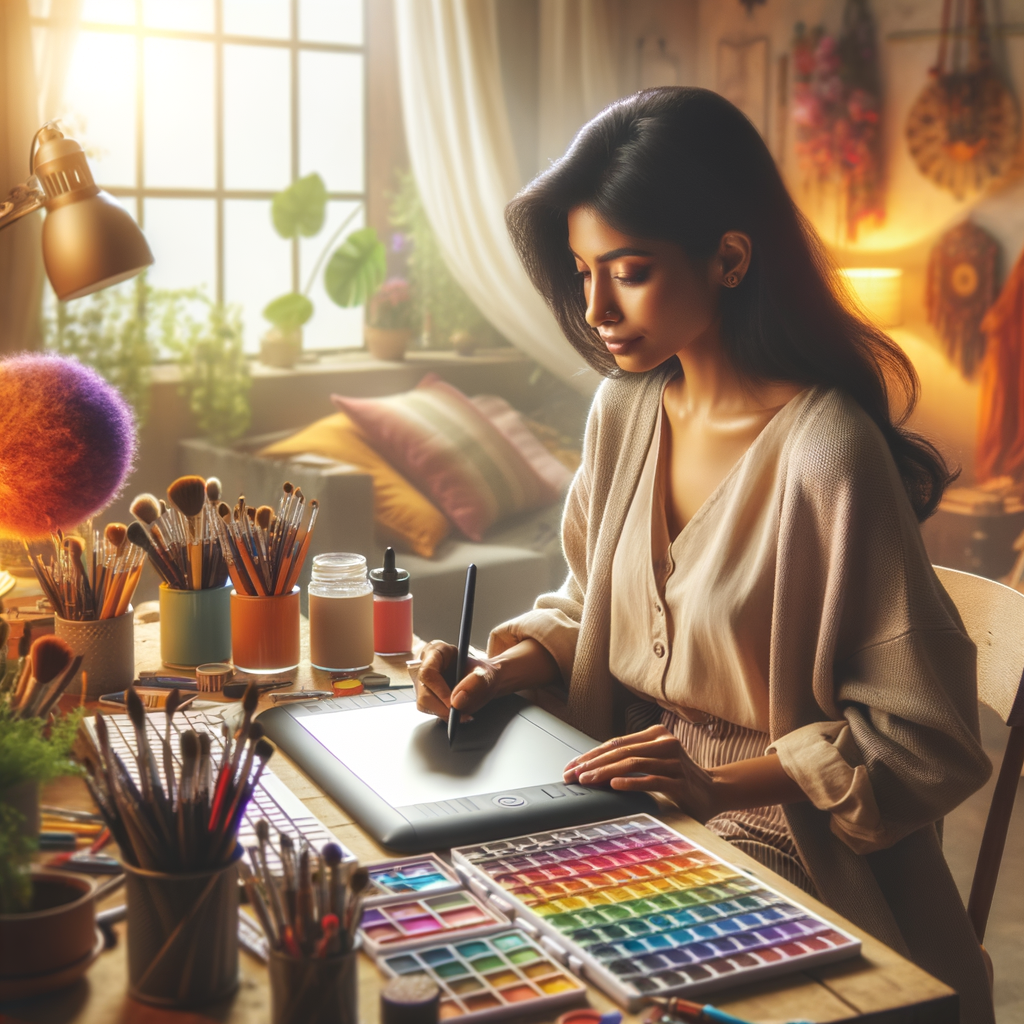
Digital painting is an extraordinary fusion of creativity and technology, allowing artists to express their visions through innovative methods and tools. Whether you are a beginner wanting to grasp the basics or a seasoned professional aiming to improve your craft, this comprehensive guide will provide you with the essential techniques and tools to master digital painting.
As we step into the world of digital art, the possibilities seem endless. The digital canvas empowers artists to explore their imagination without the limitations often found in traditional media. This article will delve into the essential techniques, tools, and practices necessary for creating breathtaking digital paintings.
1. Understanding Digital Painting Software
Choosing the right software is crucial in your digital painting journey. Here we compare some popular options:
- Adobe Photoshop: A versatile and widely-used program among professional artists, it offers a plethora of brushes, tools, and advanced features for editing and painting.
- Corel Painter: This software mimics traditional painting techniques with a vast selection of brushes and textures tailored for realistic effects.
- Clip Studio Paint: Perfect for comic and manga artists, it provides great tools for line art and coloring.
- Krita: A free and open-source program that specializes in digital painting, offering a user-friendly interface and many customizable brushes.
2. Essential Tools for Digital Painting
While software forms the backbone of your digital painting, the hardware you use can significantly impact your experience and results:
- Graphic Tablets: A high-quality tablet with pressure sensitivity is crucial. Popular choices include Wacom, Huion, and XP-Pen tablets, which provide a natural drawing experience.
- Stylus Pens: The feel of your stylus matters. A stylus that accurately senses pressure and tilt can help in creating nuanced brush strokes.
- Monitors: Invest in a good monitor with high color accuracy, ensuring that what you see mirrors what you paint.
3. Basic Techniques for Digital Painting
Mastering the fundamentals is essential for any artist. Here are some basic techniques you should practice:
- Layering: Utilize layers to separate elements in your artwork, allowing for easier adjustments and edits.
- Understanding Light and Shadow: Observe how light interacts with different surfaces to create depth and realism in your paintings.
- Color Theory: Familiarize yourself with the color wheel and the relationships between colors. Experiment with complementary color schemes to enhance vibrancy.
4. Advanced Techniques for Stunning Results
As you become comfortable with the basics, challenge yourself with these advanced techniques:
- Blending and Smudging: Use blending tools or brushes to create smooth transitions between colors, giving your artwork a polished look.
- Texture Creation: Experiment with different brushes to add texture to your paintings, enriching the visual experience.
- Custom Brushes: Create and customize brushes tailored to your style and needs, which can elevate your painting process.
5. Tips for Developing Your Style
Finding your unique artistic voice takes time and practice. Here are some suggestions:
- Study Other Artists: Analyze the works of artists you admire, understand their techniques, and interpret them in your own way.
- Experiment: Regularly challenge yourself with new styles, mediums, and concepts — don’t be afraid to make mistakes as they lead to growth.
- Keep a Sketchbook: Fill your sketchbook with ideas, doodles, and studies. It will help you refine your skills and develop your style over time.
6. Creating a Workflow
Having an efficient workflow can significantly enhance your productivity:
- Set Clear Goals: Define what you want to achieve with each painting to keep you focused and motivated.
- Use References: Always have reference images to guide you in details such as anatomy, lighting, and textures.
- Scheduled Practice: Dedicate specific time slots during your week for focused practices to sharpen your skills.
7. Joining the Community
Engaging with fellow artists can provide support and inspiration:
- Online Forums: Participate in forums or social media groups dedicated to digital painting to share your work and gain feedback.
- Workshops: Attend workshops and webinars to learn from established artists and network with peers.
- Exhibitions: Join exhibitions and competitions to showcase your artwork and gain recognition.
In conclusion, mastering digital painting is a journey filled with creativity and learning. By embracing the right tools, techniques, and community, you can elevate your artistry to new heights. Remember, the key to becoming a great digital painter lies in consistent practice, experimentation, and a willingness to learn. Happy painting!

